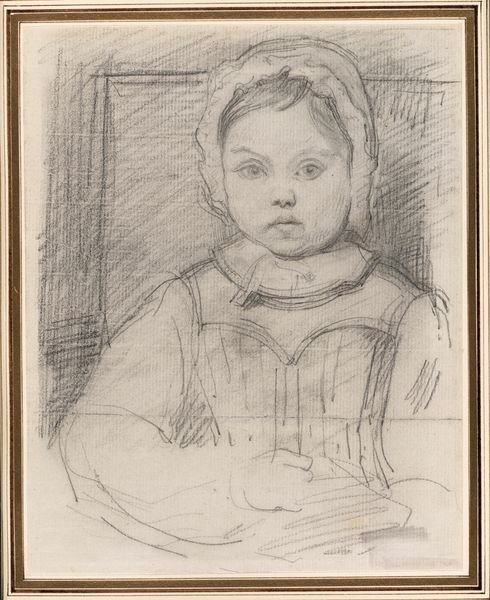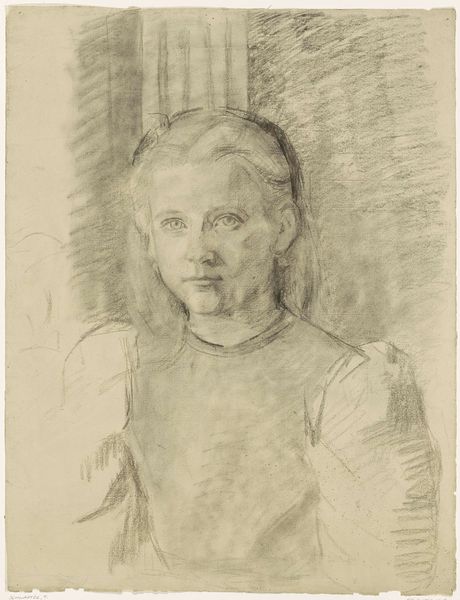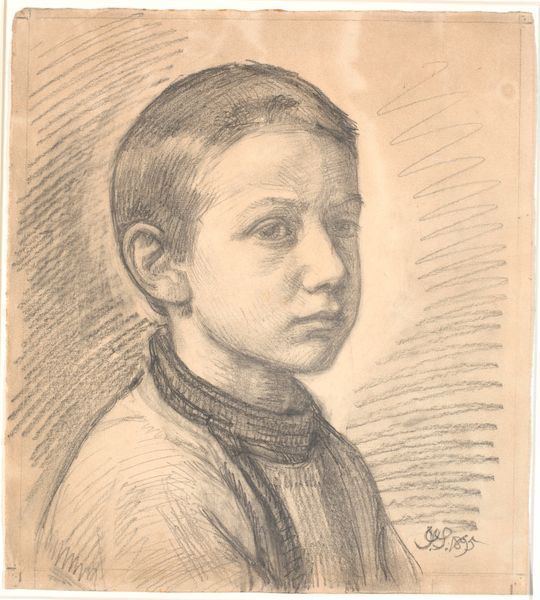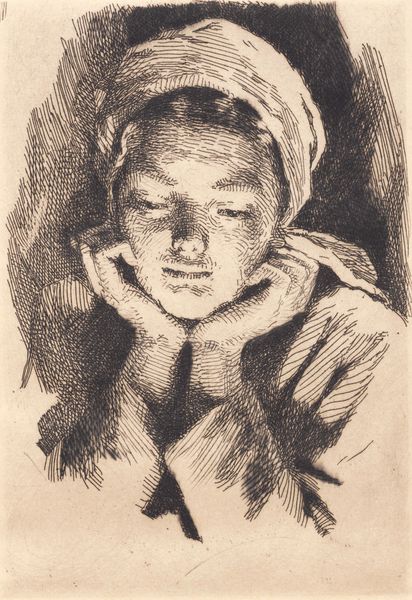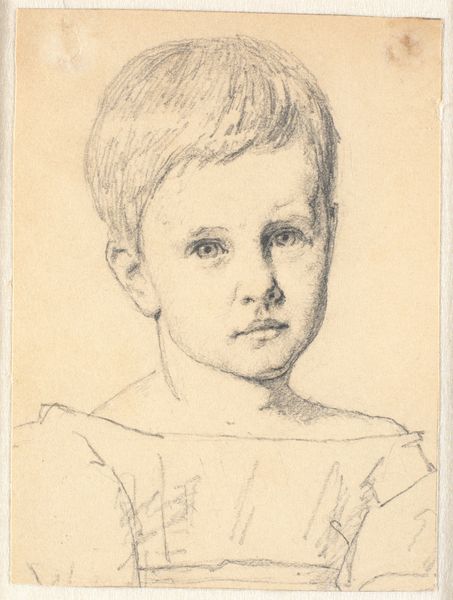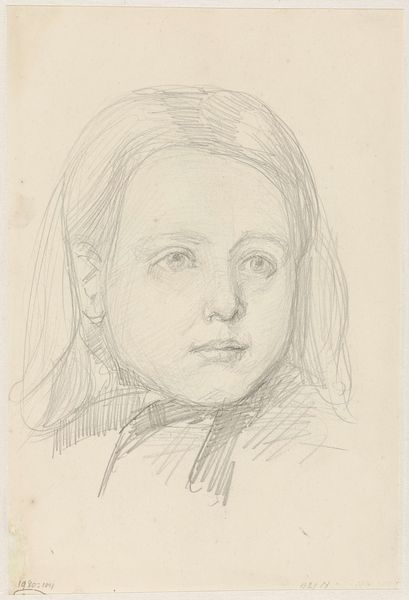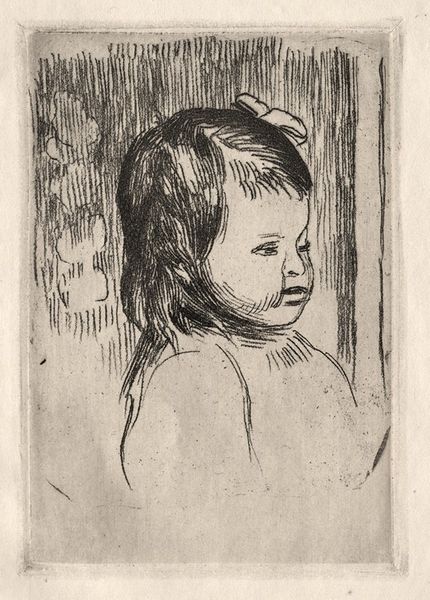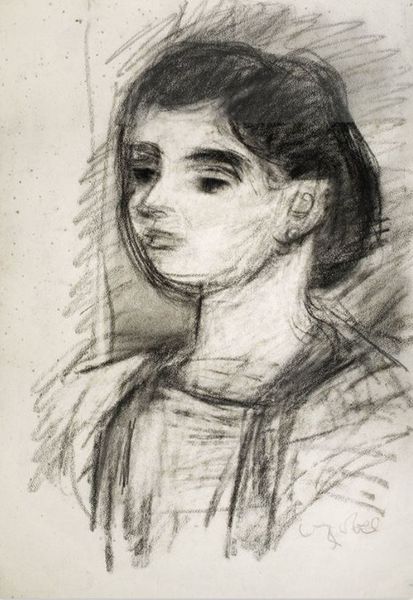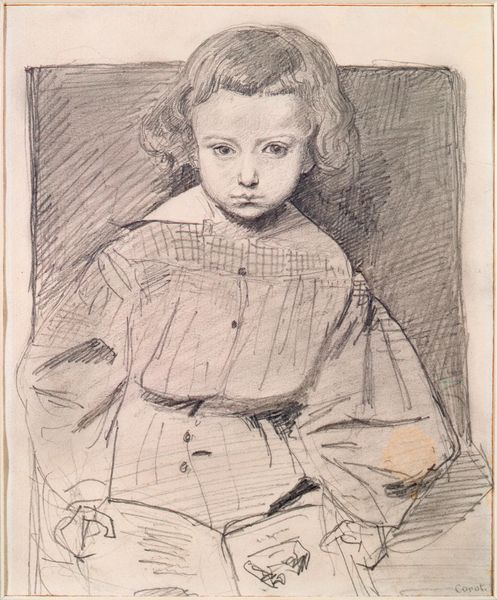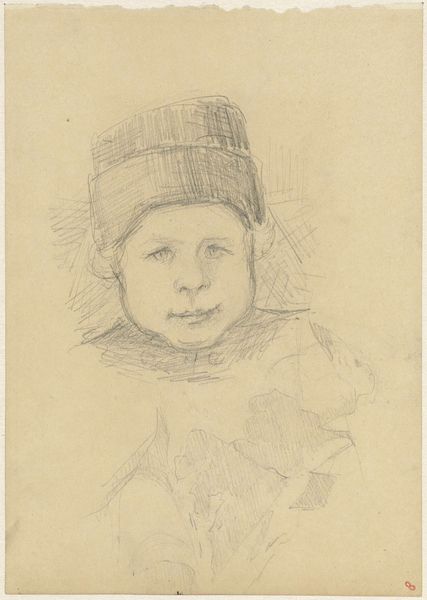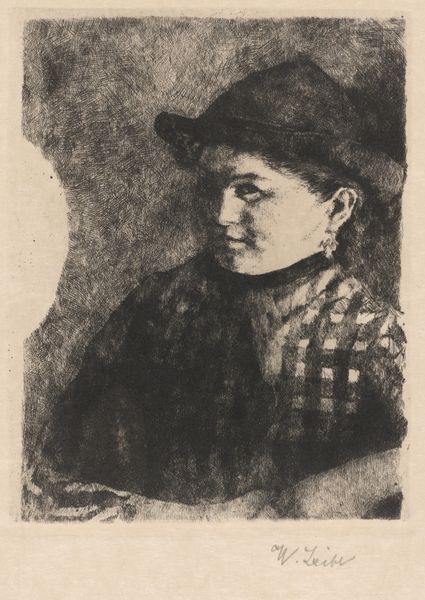
drawing, pencil
#
drawing
#
caricature
#
pencil drawing
#
pencil
#
expressionism
Dimensions: height 600 mm, width 450 mm
Copyright: Rijks Museum: Open Domain
Editor: Here we have Leo Gestel's 1921 pencil drawing, "Portrait of an Unknown Boy," currently held at the Rijksmuseum. The heavy lines and the subject's serious gaze give it a very somber, almost haunting feel. What social commentary do you think Gestel might have been exploring? Curator: I see it as a stark representation of childhood during a tumultuous time. The First World War had just ended, and Expressionism as a movement was grappling with the anxieties of a rapidly changing world. The boy's large, almost vacant eyes, combined with the exaggerated lines, suggest a loss of innocence, perhaps a commentary on how war and social upheaval impact the most vulnerable. Do you think the lack of idealization in his features contributes to this feeling? Editor: Absolutely. The imperfections feel deliberate, a move away from traditional portraiture, and very expressionistic. The title itself, "Portrait of an Unknown Boy," makes me wonder about identity and belonging during that period. Was Gestel trying to capture a broader sense of displacement? Curator: Precisely. It prompts us to consider who is deemed worthy of representation and how social forces shape individual experiences. Gestel was active during a time of immense social and political transformation, with new theories about gender and identity emerging. Perhaps through this “unknown” boy, Gestel highlights the anxieties of a society struggling to redefine itself. What implications can we derive for children in conflict zones of our time? Editor: It’s chilling how resonant these themes remain today, connecting the aftermath of the First World War to the ongoing global crises that impact children. I initially only perceived sadness, but it’s now much clearer the drawing prompts broader, uncomfortable questions. Curator: Indeed. Art like this serves as a mirror reflecting not only historical realities but also our present-day challenges, urging us to contemplate our roles in addressing inequality and displacement.
Comments
No comments
Be the first to comment and join the conversation on the ultimate creative platform.
